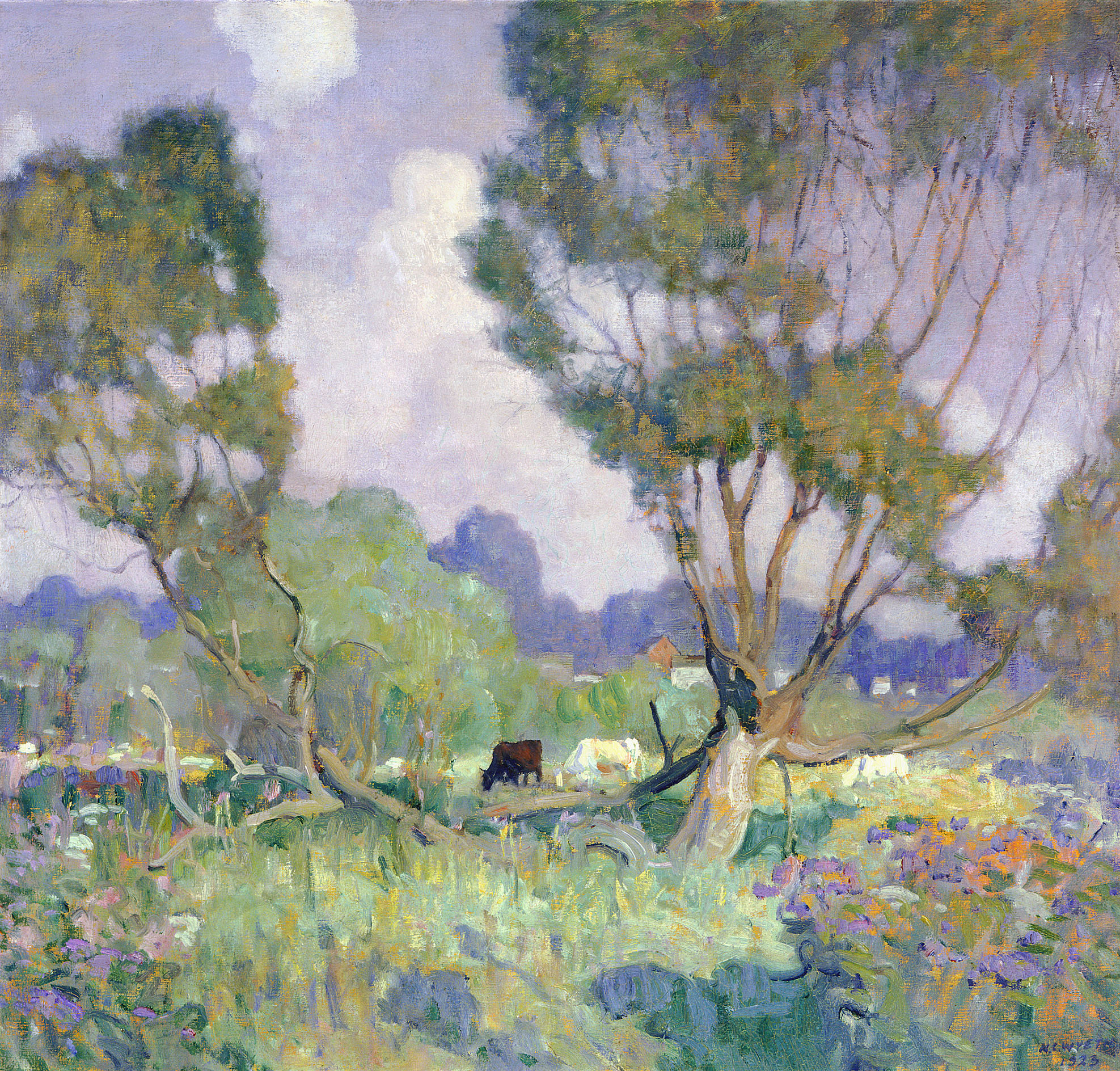

N. C. Wyeth, Untitled Landscape, 1923, oil on linen, 32 1/4 × 34 1/4 inches. Bank of America Collection.
"The Wyeths: Three Generations | Works from the Bank of America Collection" provides a comprehensive survey of works by N. C. Wyeth, one of America’s finest illustrators; his son, Andrew, and daughter, Henriette, accomplished realist painters; and Andrew’s son, Jamie, a popular portraitist.Through the works of these artists from three generations of the Wyeth family, themes of American history, artistic techniquesand creative achievements can be explored. This exhibition featuring more than 60 paintings, drawingsand illustrationsis on view in the Asheville Art Museum’s Explore Asheville Exhibition Hall Feb. 12 through May 30.This is a ticketed exhibition and tickets are on sale now atashevilleart.org.
“Bank of America is excited to partner with the Asheville Art Museum to bring this incredible exhibition as part of our Arts in our Communities program that loans exhibitions at no cost to nonprofit community museums,” said Andy H. Nadeau, president, Bank of America Asheville. “We recognize the importance of the arts as both a cultural and economic driver for our local community. This collection will only enhance Asheville’s tremendous arts and cultural landscape.”
“Bringing together these three generations of Wyeth painters allows visitors to get a sense of the artistic heritage of this famous American arts dynasty,” said Whitney Richardson, associate curator at the Asheville Art Museum. “The book illustrations and paintings of N. C. Wyeth had a profound effect on his children Andrew and Henriette, as well as on the next generation with Jamie. Each artist in the family held true to N. C.’s realistic style and interest in American history and their family, often as seen from their homes in Chadds Ford, PA and Cushing, ME.”
N. C. Wyeth(1882–1945) has long been considered one of the nation’s leading illustrators. In the early 1900s, he studied with illustrator Howard Pyle in Delaware. In 1911, he built a house and studio in nearby Chadds Ford, Pennsylvania. Later, he bought a sea captain’s house in Maine and in 1931 built a small studio, which he shared with his son, Andrew, and his daughters, Henriette and Carolyn. The exhibition includes illustrations for books by Robert Louis Stevenson and Washington Irving as well as historical scenes, seascapes, and landscapes.
Andrew Wyeth(1917–2009) is one of the United States’ most popular artists, and his paintings follow the American Realist tradition. He was influenced by the works of Winslow Homer, whose watercolor technique he admired, as well as by the art of Howard Pyle and his father, N. C. While Andrew paintedrecognizable images, his use of line and space often imbue his works with an underlying abstract quality. The exhibition includes important works from the 1970s and 1980s as well as recent paintings.
Henriette Wyeth(1907–1997) was the eldest daughter of N.C. Wyeth and an older sister to Andrew Wyeth. Like other members of her family, her painting style was realist in a time when Impressionism and Abstraction were popular in the early 20th century. She studied painting at the Pennsylvania Academy of the Fine Arts and was an acclaimed portraitist, though perhaps not as widely known as her father and brother. Most notably she painted the portrait of First Lady, Pat Nixon, which is in the collection of The White House.
Jamie Wyeth(born 1946), like his father and grandfather, paints subjects of everyday life, in particular the landscapes, animalsand people of Pennsylvania and Maine. In contrast to his father—who painted with watercolor, drybrushand tempera—Jamie works in oil and mixed media, creating lush painterly surfaces. The 18 paintings in the exhibition represent all periods of his career.
This exhibition has been loaned through the Bank of America Art in our Communities® program.